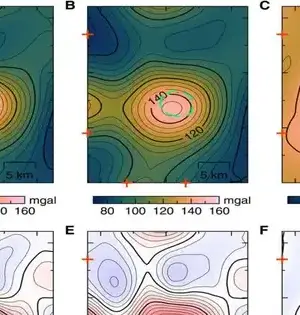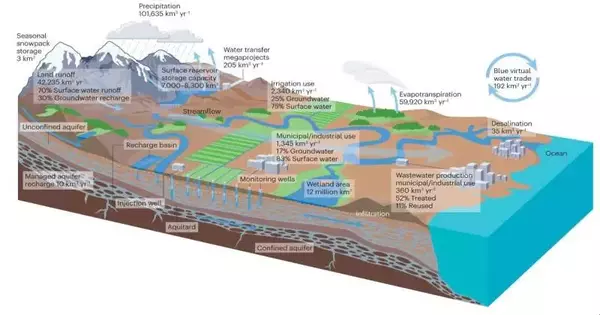Extreme precipitation has increased most rapidly in the Northeast over the past 25 years. According to previous studies, the amount of extreme precipitation—rain or snow that leaves behind one to two inches of water in a single day—has increased by almost 50 percent since 1901 to 1995. A new Dartmouth study sheds light on how changes in temperature and precipitation brought on by global warming affect flooding and streamflow in the Northeast. The results have been published in the American Water Resources Association Journal. The scientists analyzed how precipitation, including snowfall, winter downpours on snow occasions, springtime snowmelt, and soil
Earth Sciences
A professor from the University of South Florida found that lightning that struck a tree in a New Port Richey neighborhood created a new phosphorus substance. It was discovered in a rock, the first time in solid form on Earth, and it might be a new class of mineral. According to geoscientist Matthew Pasek, "We have never seen this material occur naturally on Earth—minerals similar to it can be found in meteorites and space, but we've never seen this exact material anywhere." In a recent study that was published in Communications Earth and Environment, Pasek looks at how high-energy events
Recently, a small Cessna plane carrying an experimental technology flew over the Senales Valley in South Tyrol, which is located between Vernago Lake and Grawand. A sensor tracked the heat transfer between snow and air over the course of two flights. Eight teams, each led by an expert from Eurac Research, traveled the same routes on the ground to measure the snow's depth with scaled rods and weigh the snow to determine its type. If examination of the data gathered demonstrates that the technology is trustworthy and the measurements agree with those made on the ground, it might then be
According to new research that was just published in Communications Earth and Environment, the Amazon rainforest and its indigenous territories can absorb up to 26,000 metric tons of harmful pollutants each year that are released by fires, preventing thousands of cases of deadly respiratory and cardiovascular diseases and drastically lowering health care costs in some of the most deforested cities in the area. The new study's authors analyzed ten years' worth of data and discovered that each hectare of burned forest costs cities at least US$2 million in medical expenses for treating related illnesses. However, they also demonstrated that Indigenous
Long before there were dinosaurs, Earth was ruled by creatures that, in many ways, were even more amazing. Large armored reptiles the size of buffalo were stalked by carnivores like Titanophoneus, also known as the "titanic murderer." Approximately 260 million years ago, during the Capitanian Age, a mass extinction wiped out many of these animals. An international team of researchers has now claimed that evidence suggests this mass extinction was actually two separate events, separated by nearly 3 million years. Massive volcanic eruptions were the same thing that caused both "We are researching the Permian biocrisis, but similar warming is
The Earth was so cold many millions of years ago that the majority of its surface was covered in ice. But it's possible that the hard freeze was sludgier than previously believed. According to the well-known "Snowball Earth" theory, our planet appears to be a perfect sphere from space, with ice covering both land and water. It makes use of hints like deposits left behind by glaciers close to the equator. Ice extending that far from the poles suggests that much of our planet was once frozen. But there has long been debate over how thorough the cover was, with
In the Arctic, the Greenland Ice Sheet covers an area of 1.7 million square kilometers (660,200 square miles). Global sea level would rise by about 7 meters (23 feet) if the ice sheet completely melted, but scientists are unsure of how quickly it could melt. Researchers are able to determine when that melt might occur by modeling tipping points, which are critical thresholds at which the behavior of a system changes in an irreversible way. A new simulation-based study found two tipping points for the Greenland Ice Sheet, partly based on carbon emissions: The southern portion of the ice sheet
A new survey conducted by the College of Texas at Austin gives an outline of the planet's freshwater supplies and methodologies for reasonably overseeing them. Distributed in Nature Audits Earth and Climate, the review features the associations between surface and groundwater and calls for broader techniques for overseeing them both. "I like to stress a ton of arrangements and how they can be enhanced," said lead creator Bridget Scanlon, a senior exploration researcher at the UT Department of Monetary Geography, an examination unit of the Jackson School of Geosciences. "This type of integrated research, which connects surface and groundwater, is
The College of Oxford's research could address the helium supply crisis, an essential cultural asset.The review proposes another model to represent the presence of already unexplained helium-rich supplies. The discoveries, distributed today in Nature, could assist with finding undiscovered supplies of available helium. Helium, which is fundamental for some clinical and modern cycles, is basically in short supply around the world. Creation is additionally connected with huge fossil fuel byproducts, adding to environmental change. This study adds to our understanding of gas field development by explaining why, in unusual places, helium accumulates in high concentrations just beneath the Earth's surface.The
From the get-go in the development of Earth, an expanse of magma covered the planet's surface and extended a huge number of miles deep into its center. The rate at which that "magma sea" cooled impacted the arrangement of the particular layering inside the planet and the synthetic makeup of those layers. Previous research estimated that it would take many million years for that magma sea to cement; however, a new study from Florida State University, published in Nature Communications, reduces these enormous vulnerabilities to not exactly several million years. "This magma sea has been a significant piece of Earth's















